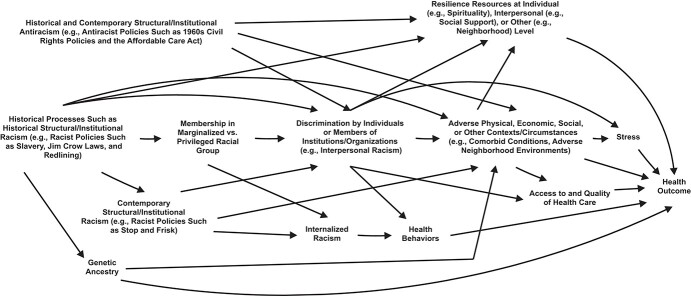Figure 1.
Simplified causal diagram for studying racial health disparities. Membership in a marginalized vs. privileged racial group is socially constructed (1–4, 6, 8, 9); a racist policy increases or maintains inequity (e.g., opportunities, health outcomes) between racially defined groups (7); an antiracist policy increases or maintains equity (e.g., opportunities, health outcomes) between racially defined groups (7); and depending on the particular research question, specific antiracist policies may also be considered to be resilience resources. Further, although contemporary structural/institutional racism is depicted as being caused by historical processes such as historical structural/institutional racism, any specific racist policy may or may not have been caused by prior processes or contexts. Last, racial group membership, genetic ancestry, internalized racism, health behaviors, access to and quality of health care, stress, and health outcome are at the individual level; historical and contemporary structural/institutional racism and antiracism, as well as discrimination by individuals or members of institutions/organizations, are at the nonindividual level; and resilience resources as well as adverse physical, economic, social, or other contexts/circumstances can be at the individual or nonindividual level.

